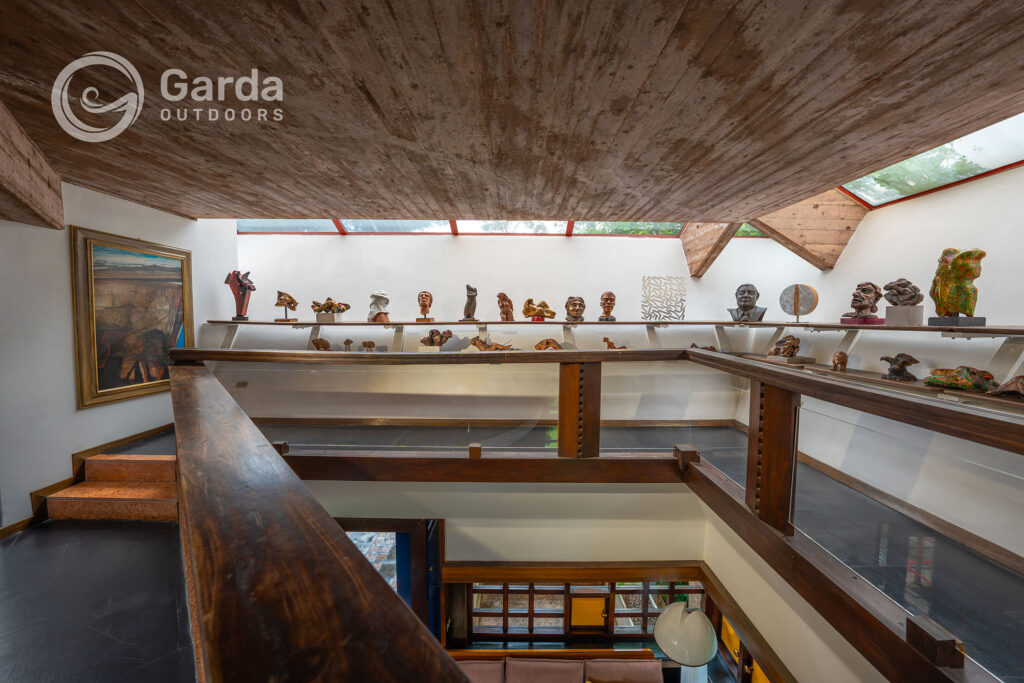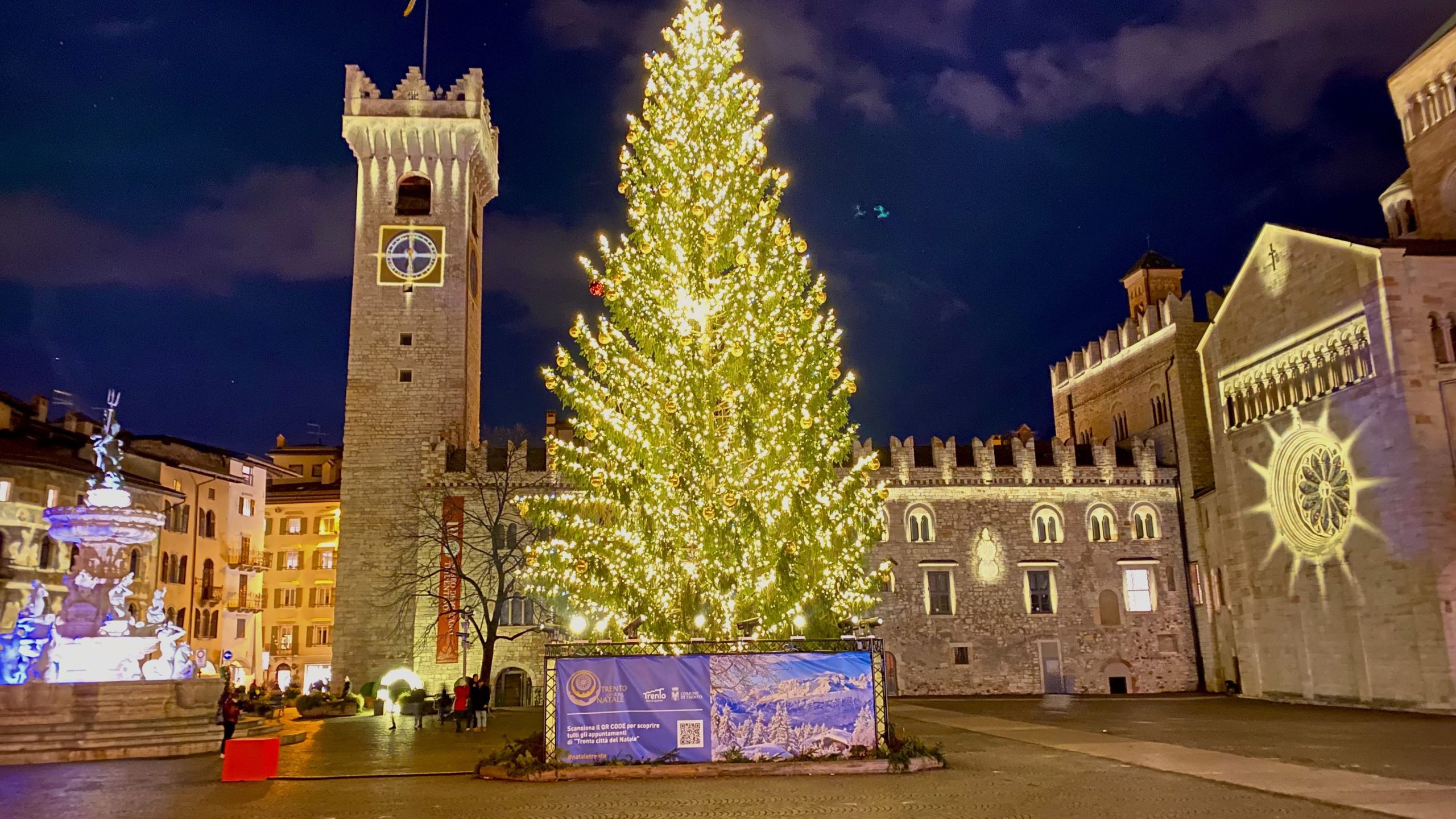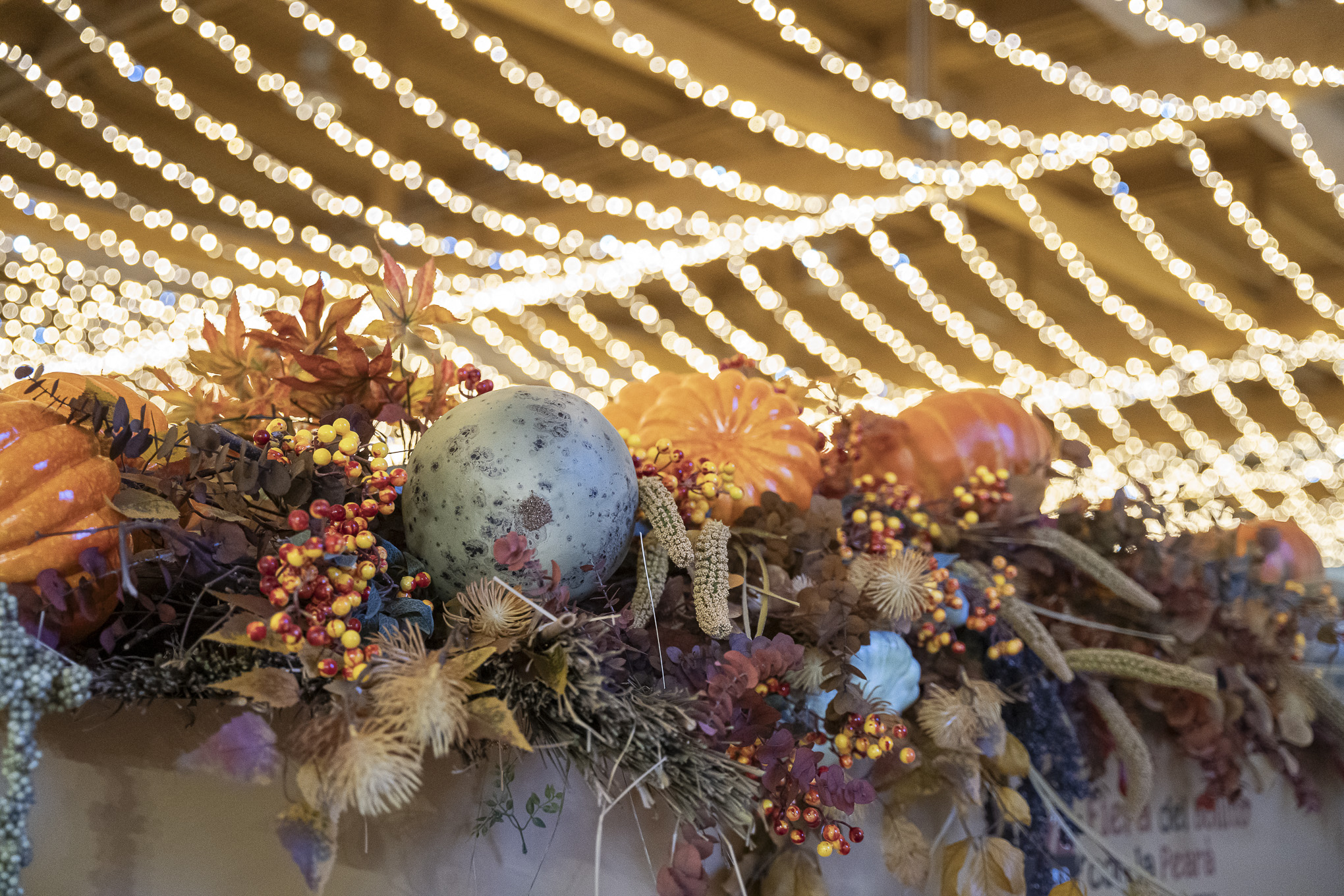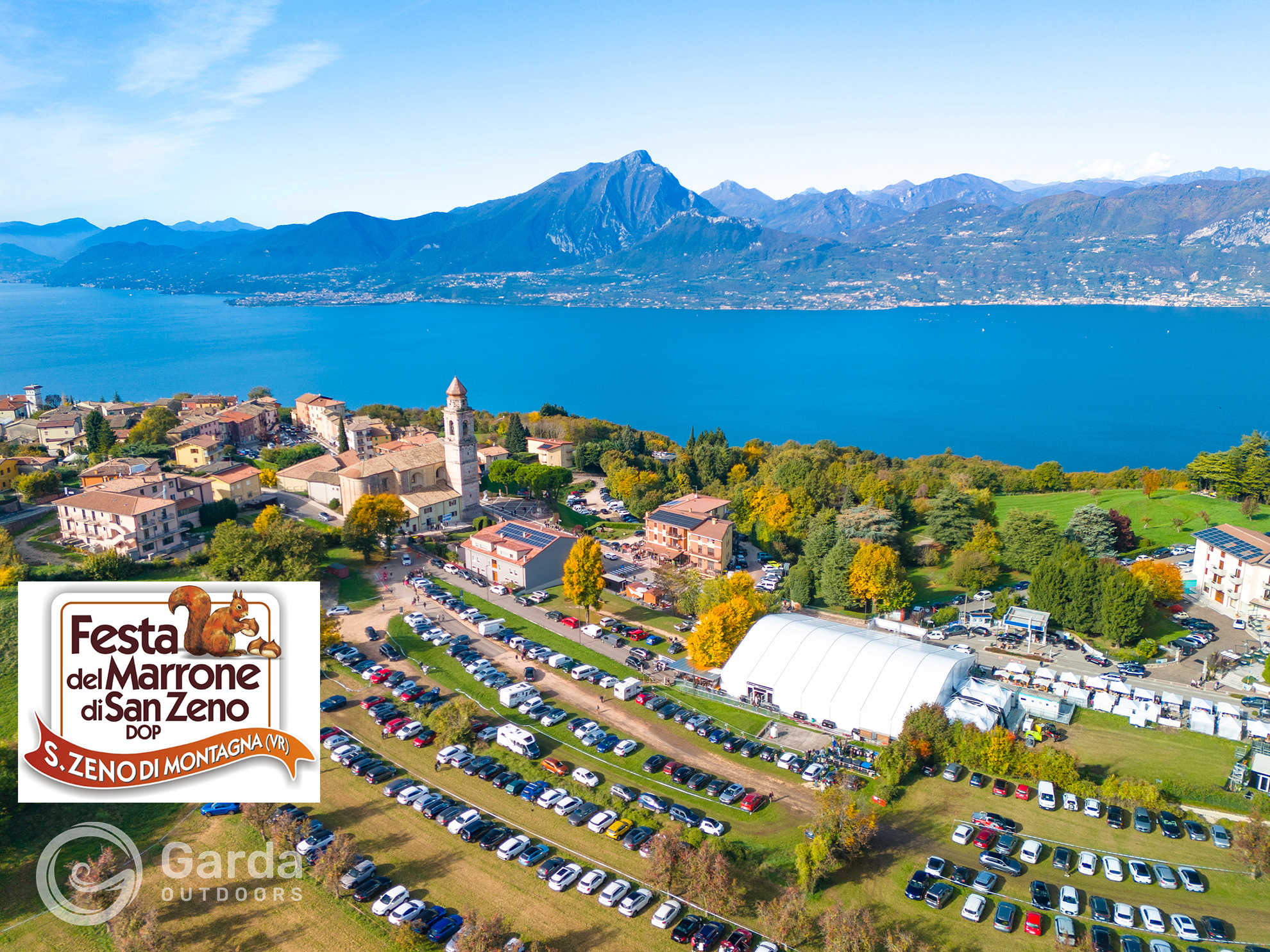Let us begin with a quote from Carl Sagan, the well-known astronomer and populariser of science: Somewhere, something incredible is waiting to be known.
And that is precisely the intent of the article you are reading: to enter the ‘belly’ of an incredibly beautiful villa, a witness to a bygone era in which every detail is thought out and not left to chance.
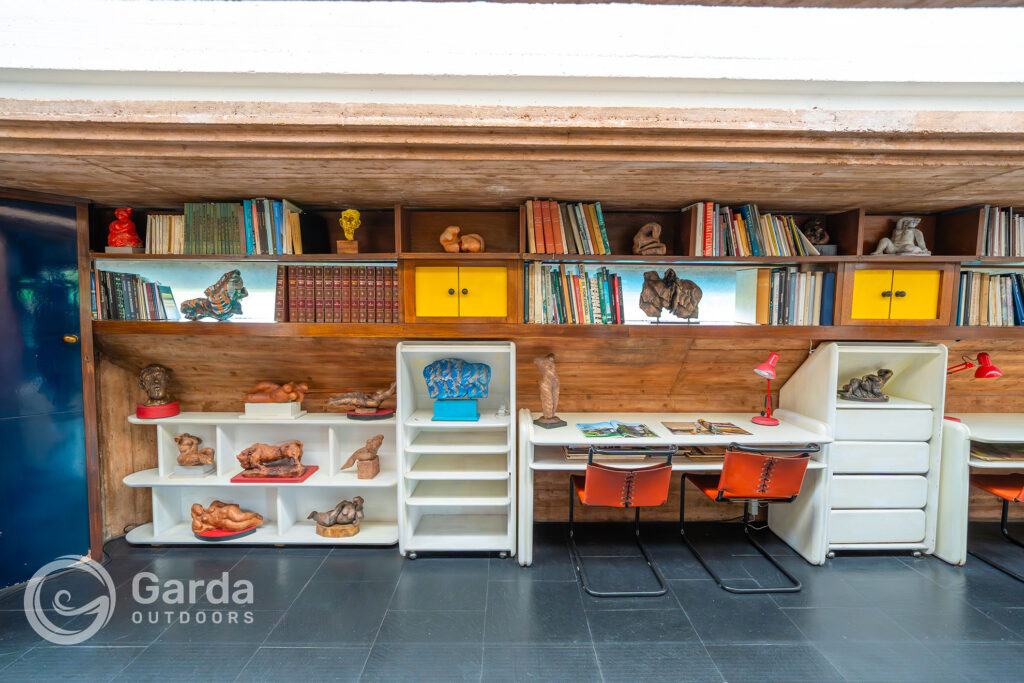
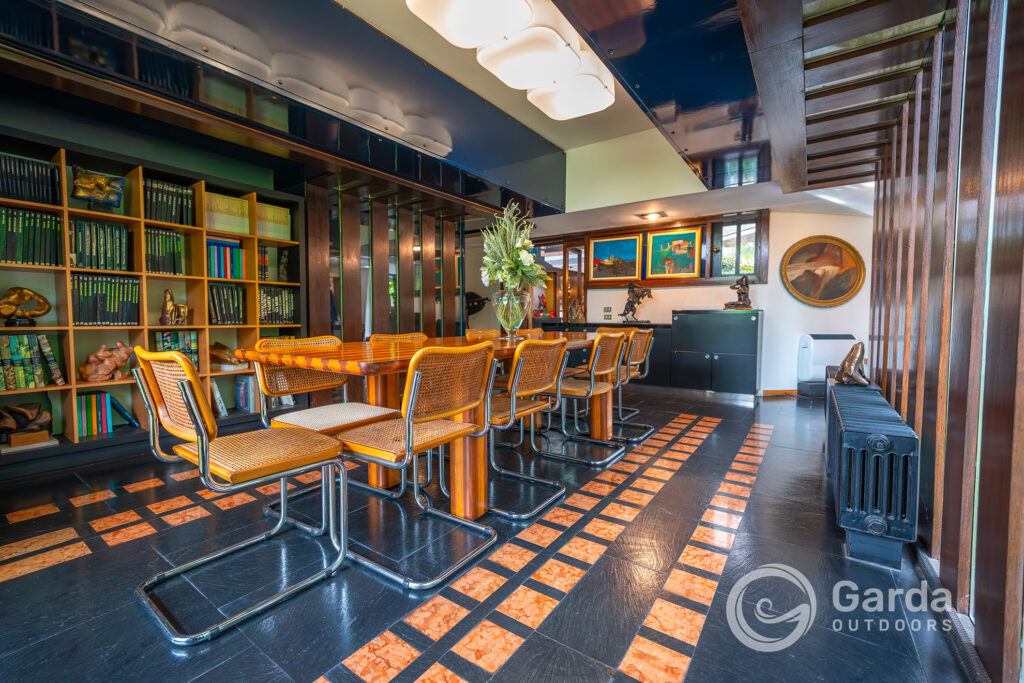
A short history of Villa Caffetto
Born out of the shared vision of architect Fausto Bontempi (1935 – 2025) and artist-entrepreneur Claudio Caffetto (1942 – 2022) between 1973 and 1976, this iconic residence in Calcinato (Bs) defies all categorisation, boldly blending brutalism, post-modernist suggestions, Bauhaus primary colours and high-tech hints in an unprecedented dialogue.
Reinforced concrete dialogues with sheets of glass and metal structures, with inserts of wood and stone – clear influence and inspiration from Carlo Scarpa – adding warmth and precision craftsmanship.
This dwelling transforms the living space into a veritable living museum, to be experienced and traversed: the volumes are articulated on asymmetrical levels, with sloping rooms, suspended ramps and staircases designing ascending paths.
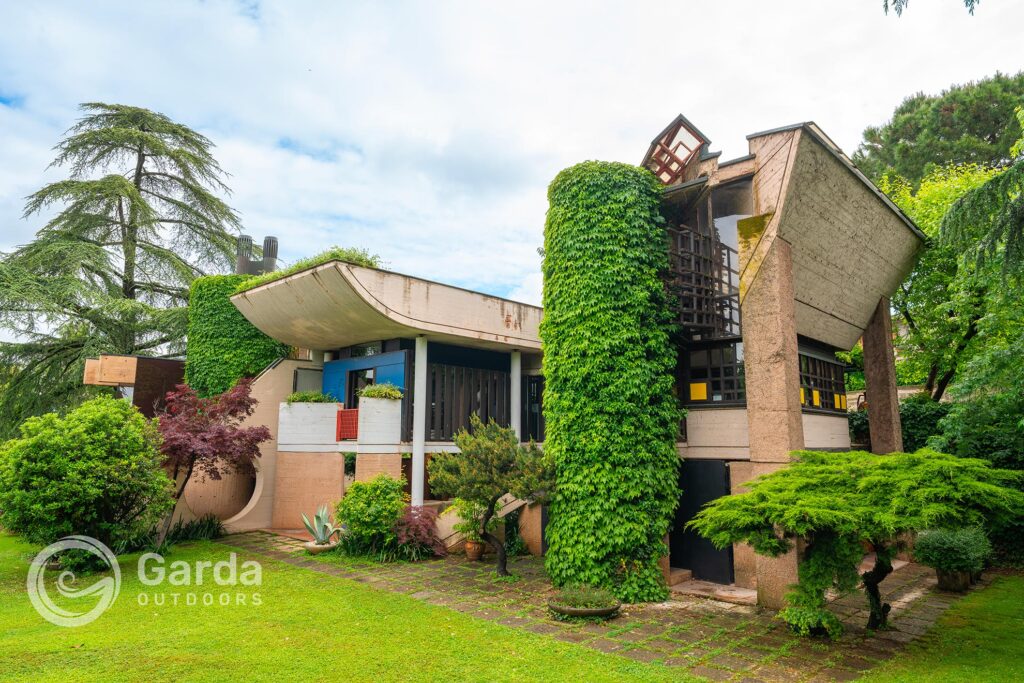
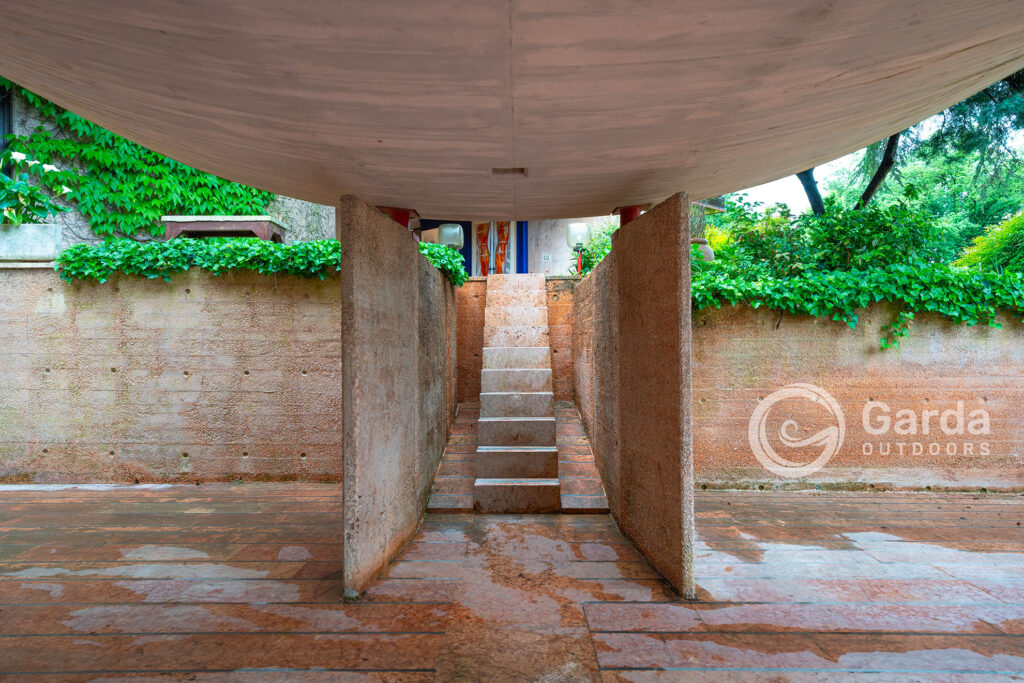
The beating heart of the composition is an interior gallery that houses the works of the Caffetto itself, which became, and still is, an exhibition area and meeting place for international artists (including, from the past, Dadamaino, Berrocal, Hsiao Chin, Carmelo Cappello, Franco Grignani, Delima Medeiros, Claude Tieche, Rinaldo Pigola and Gino Cosentino).
Villa Caffetto is today listed as part of the architectural cultural heritage of the Region of Lombardy.

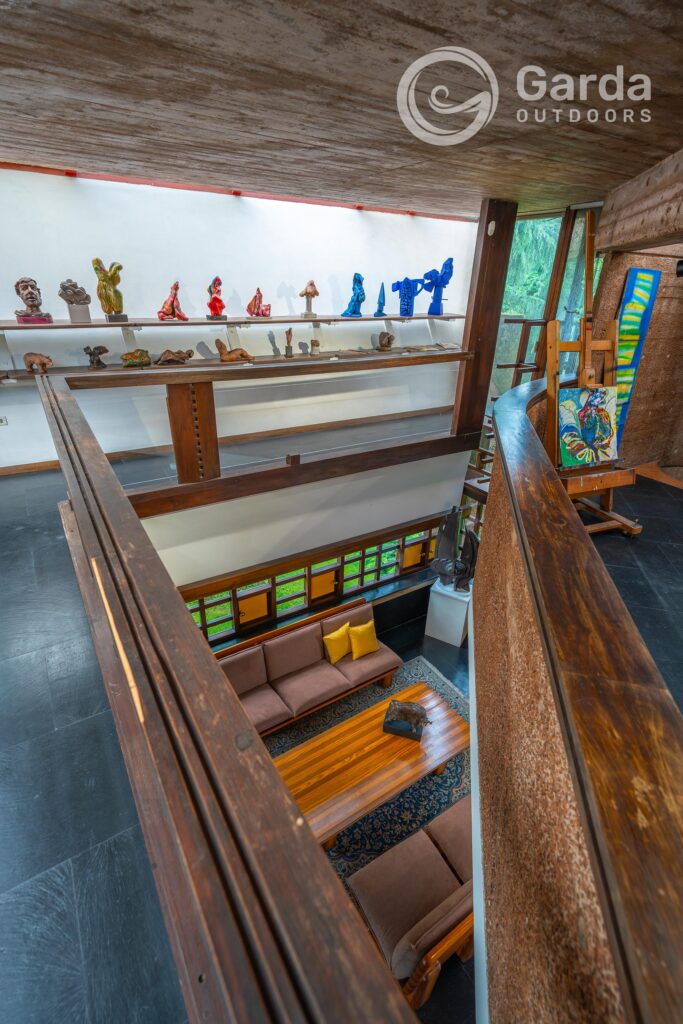
Who is Claudio Caffetto?
Born on 7 May 1942 in Brescia, Claudio Caffetto showed artistic talent at an early age, encouraged by the painter Romeo Bellucci, his primary school teacher. Having been orphaned by his mother when he was only 14 years old, he began working as a draughtsman in the studio of architect Bruno Fedrigolli, where he developed a passion for architecture and attended evening drawing and sculpture courses at the AAB (Association of Brescian Artists) under the guidance of masters Corbellini and Lusetti.
In this environment he came into contact with leading figures in Brescian art, including Renato Laffranchi and the famous collector Guglielmo Achille Cavellini. At the same time, he devoted himself to the design of pewter objects for local craftsmen, an activity that led him, still in his twenties, to open the ‘Metalpilter’ workshop in Brescia, specialising in artistic pewter handicrafts.
In 1963, he married Franca Manera, with whom he would have two daughters (Metilde and Giovanna), and moved the business to Ponte San Marco di Calcinato. Over the years, Caffetto expanded his range of activities, becoming a union representative for Confartigianato and exporting his works to France, Germany and Norway.
The artistic turning point came in 1974, when he commissioned architect Fausto Bontempi to build Villa Caffetto, a house-museum that became a lively cultural centre, hosting artists such as Miguel Berrocal, Franco Grignani and Dada Maino. Cavellini himself would include it among the key places of his ‘self-historicisation’.

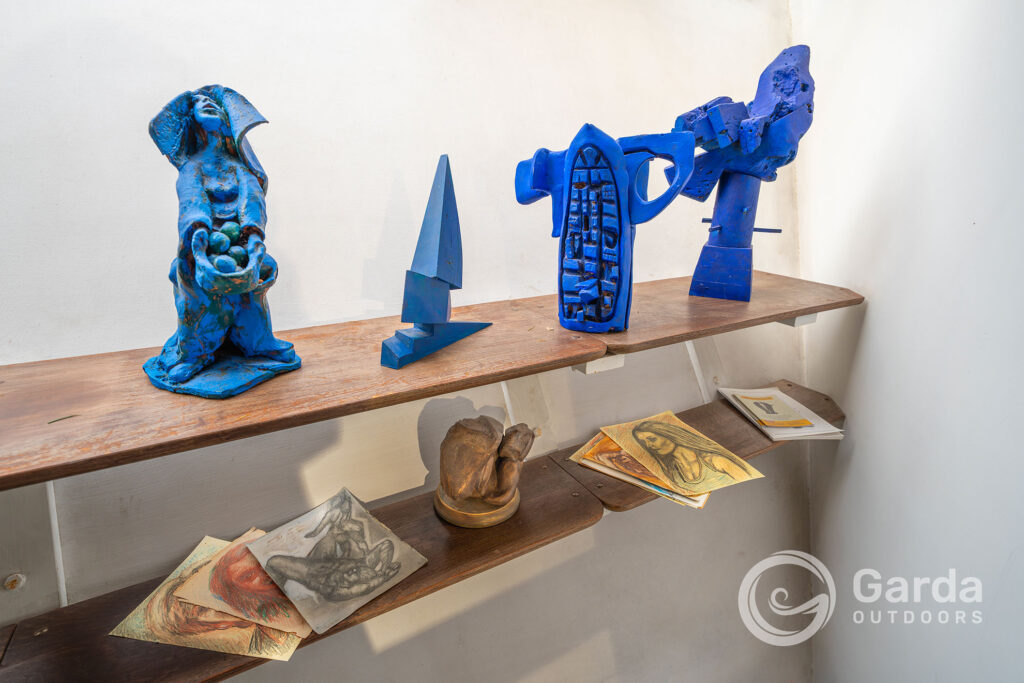
In the 1980s he founded Edizioni d’Arte Caffetto, dedicating himself to the production of multiples in bronze, copper and pewter, while on an institutional level he held prestigious positions such as: National President of Assopeltro, President of the European Pewter Union and member of the Board of the Brescia Chamber of Commerce.
In 1986, he was appointed Officer of Merit of the Italian Republic. After retiring from public commitments, in the 1990s he devoted himself to art with renewed vigour, exhibiting in Switzerland, France and Norway, while his family expanded with four grandchildren.
His life has been a unique blend of art, craftsmanship and social commitment, leaving a legacy that combines creativity, innovation and culture.
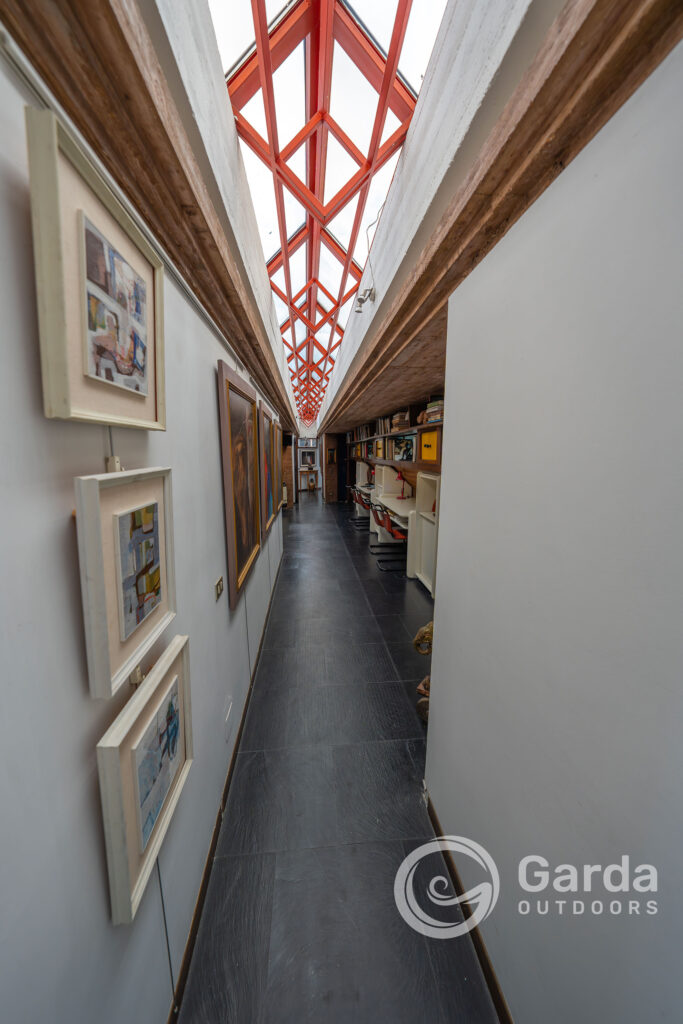
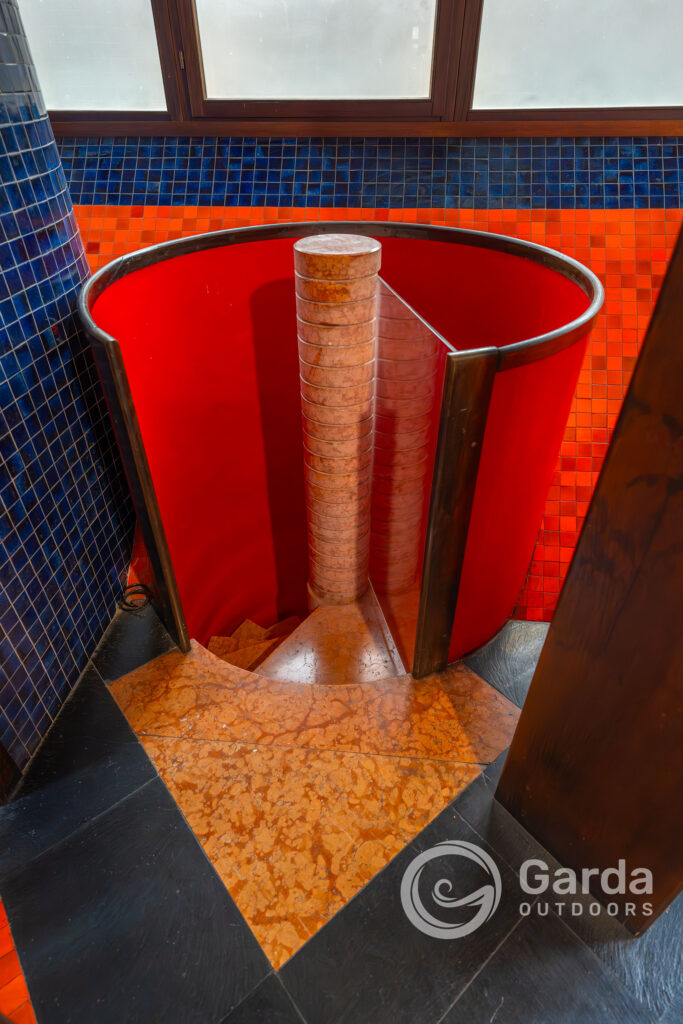
The architecture of Villa Caffetto
A symbiotic dialogue with the landscape
The building blends elegantly into the changing morphology of the hill on which it stands, becoming itself an integral part of the landscape. Through large wall and ceiling windows, nature penetrates the interior in an interplay of multiple perspectives, while the architectural spaces seem to lean towards the sky and the outside in an explosion of volumes. Light is skilfully tamed: the rooms to the north are lit by skylights designed to capture the diffuse light, while those to the west lean out towards the east, welcoming even the first rays of dawn.
Architecture as provocation
The relationship with the surrounding garden is essential: terracing, lush planters and hanging gardens create continuity between inside and outside. The design breaks all traditional patterns, embracing a logic of dynamism, centrifugation and subversion of canons. This is not a house in the conventional sense, but a perceptual experience in continuous evolution, like nature.

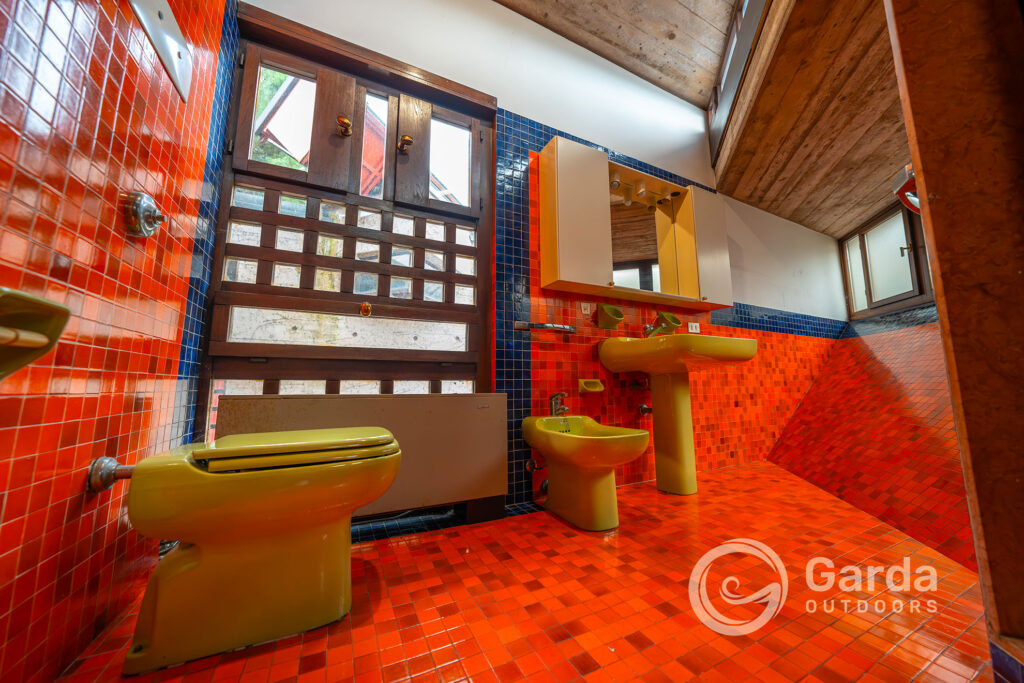
A house without a façade, but infinite perspectives
Lacking a true main façade, the villa presents itself as a set of changing perspectives, where classical references – living area, sleeping area, hall – are overcome by a daring spatial organisation. Sinuous paths, ramps, spiral staircases, suspended bridges, loopholes and transparencies intertwine in a plan that invites exploration. Living is no longer understood as mere rest or leisure, but as a dynamic, moving experience that stimulates the imagination.
Unusual materials and experimentation
The use of materials reflects this philosophy: exposed reinforced concrete, wood, stone slabs and metal roofing are combined in a balance of contrasts and distinct colours. Inside, wax-polished slate floors are enriched with inserts of pink Asiago marble, while outside, natural slate and Verona red dominate. Wooden or painted metal window frames complete a picture of refined heterogeneity.
All the furniture inside are original one-off pieces from the 1970s, designed by Mr Caffetto and created by the skilled hands of his carpenter brother, to whom a bust in the exhibition area is also dedicated.
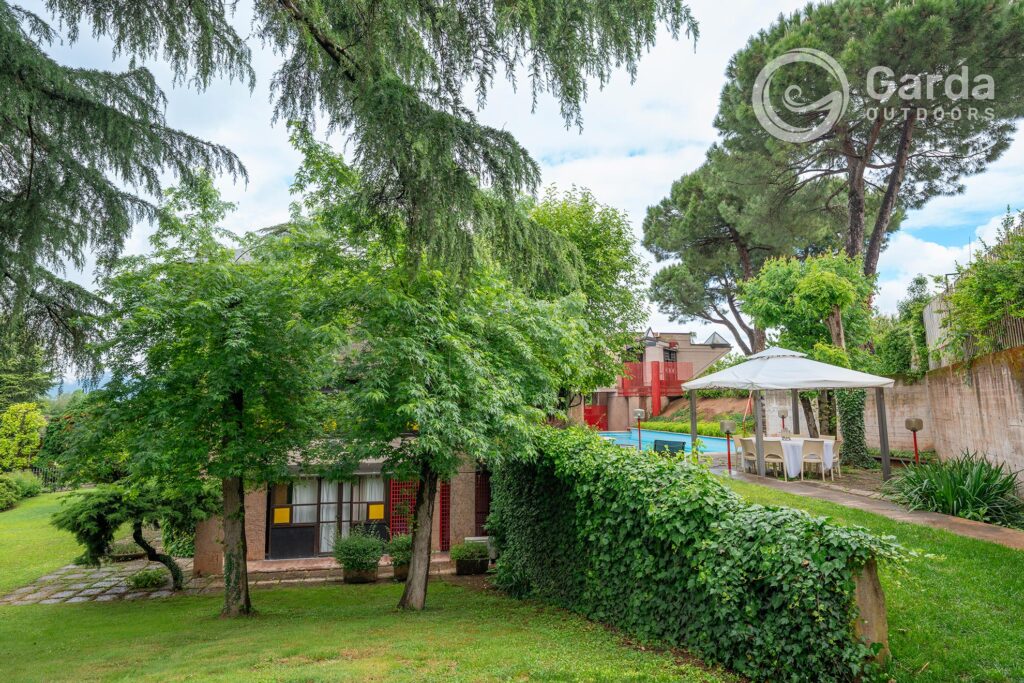

When and how to visit Villa Caffetto
Villa Caffetto can be visited every month during a weekend, when they organise guided tours as well as courses, workshops and cultural events. We recommend you follow their Instagram page (@villacaffetto) or their website www.villacaffetto.it, where the various initiatives are always updated.
The house is located in Via Dottor Luigi Branca 2 in Calcinato (Brescia). You can easily park your car along the street; for large cars and minibuses there is also a convenient public car park a few dozen metres away in Via Martiri delle Foibe.
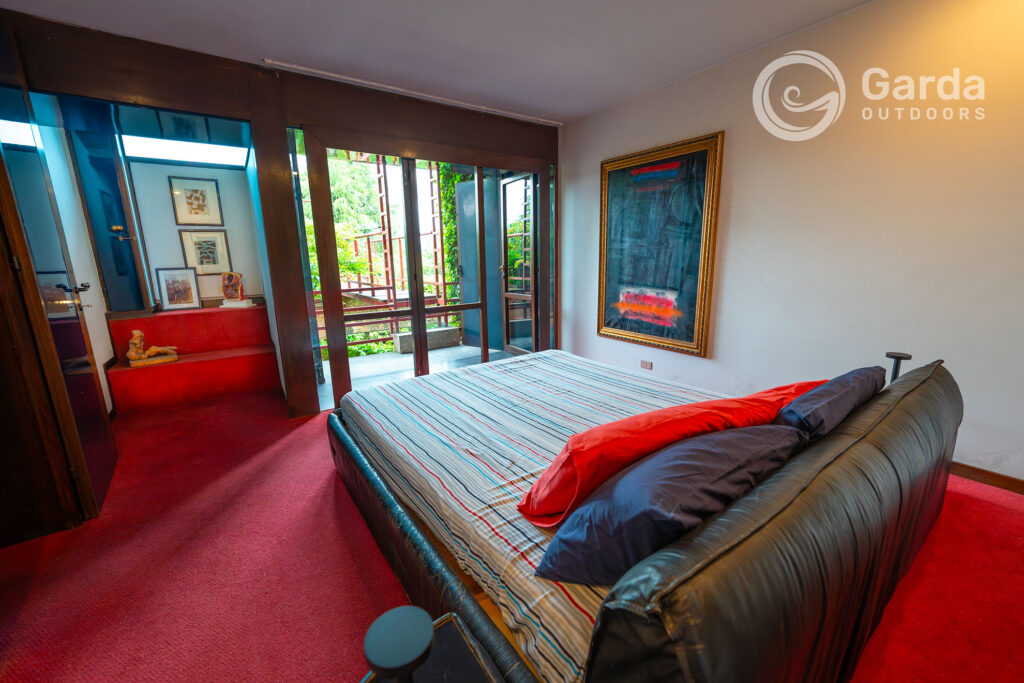
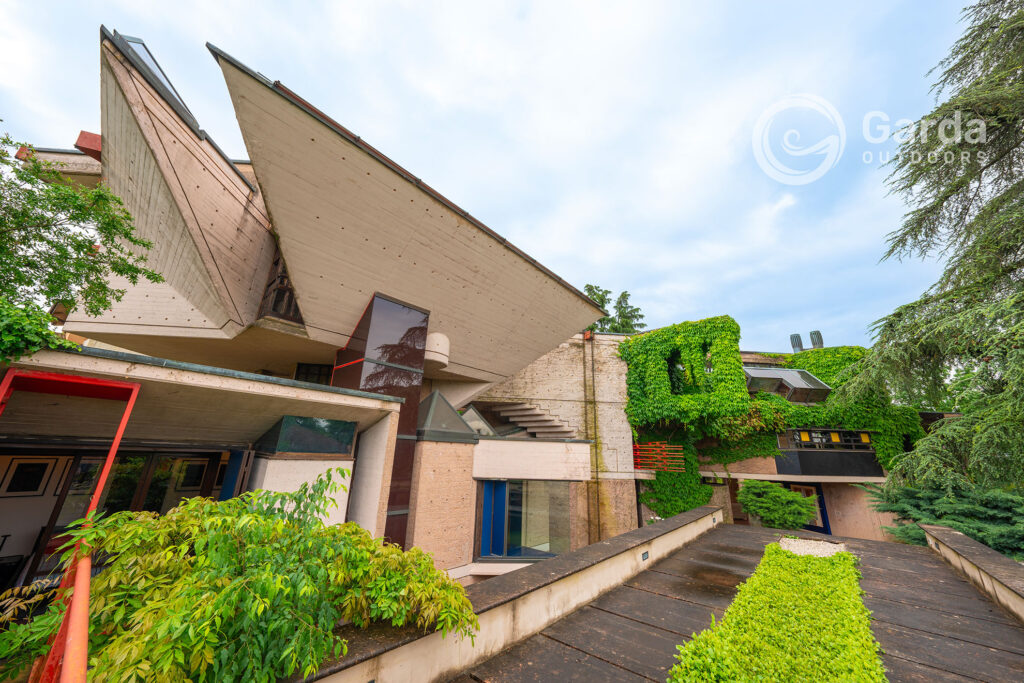
What to see and do around Villa Caffetto
The villa is just a handful of minutes’ drive from the beautiful historic centre of Montichiari, with its Basilica and Bonoris Castle.
Only 20 minutes away are the picturesque historic centres of Desenzano del Garda (the closest), followed to the east by Sirmione and to the west by Padenghe sul Garda and the entire hilly Valtenesi area.
Just under half an hour away is one of the most surprising cities on Lake Garda: Brescia.
Would you like to experience the area even more? Take a look at our Experience section and get inspired!


Other useful info
Villa Caffetto cannot just be visited, it can be lived in! The small outbuilding of the building is in fact used as a rental flat for 2 persons, which also allows the exclusive use of the park and the large swimming pool.
The Villa is also available for organising private and corporate events, exhibitions, shootings and cultural projects.
The liveability of the interior does not allow a large number of people to be seated, which is why it is not suitable for weddings or ceremonies with many guests.


Our visit to Villa Caffetto was an explosion of surprise and wonder.
Don’t expect the various rooms to be in ‘their place’ in the conventional, standard way we are used to.
The great emotion it offers lies right here: a clever rebellion against the ordinary, where walls become wings, ceilings open to the sky and every step is a journey between art and landscape.
A house that is not just inhabited, but lives, breathes and amazes, just like the person who imagined it.
A heartfelt thank you to Mrs Metilde Caffetto, who opened the doors of her home and heart to us.
Ciao dear Outdoors!
Silvia Turazza
